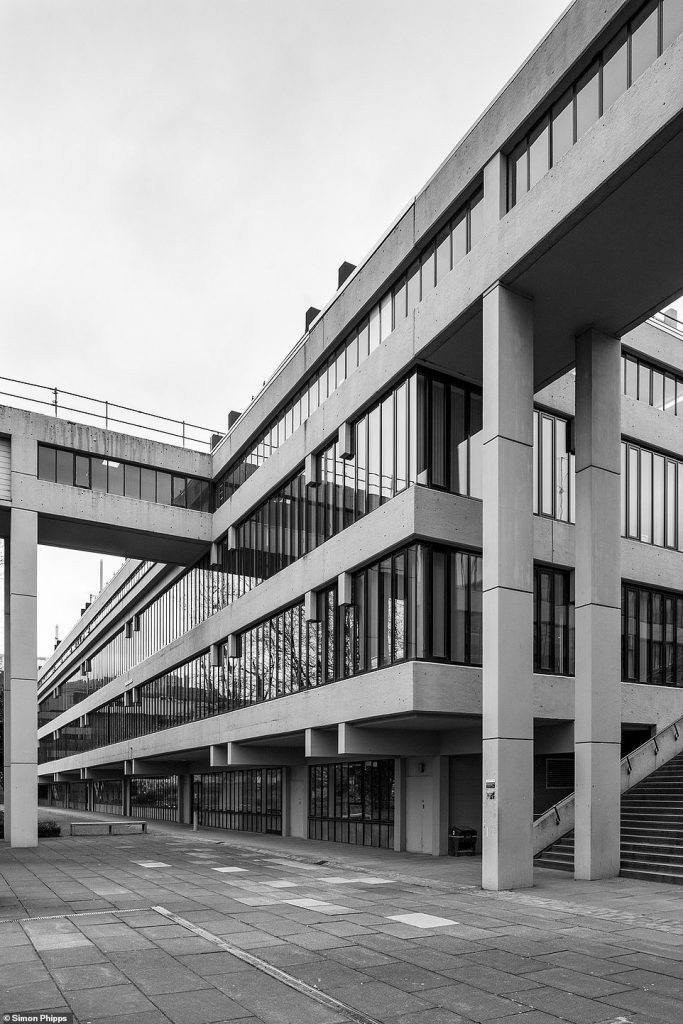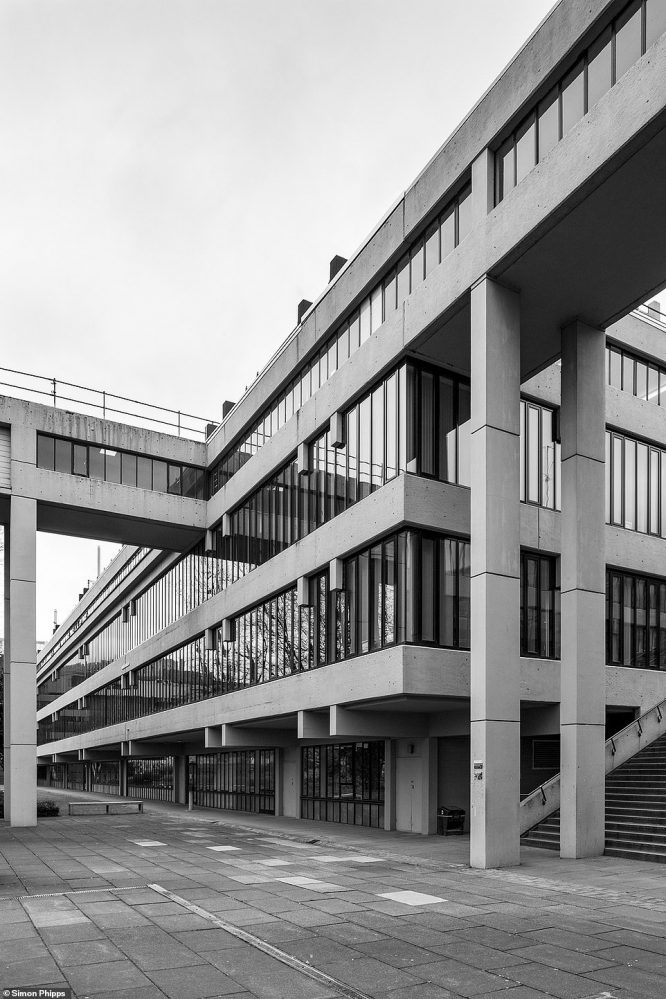Simon Phipps’ new photo book “Brutal North” offers a visual view of the rusticist architecture of northern England last century.
The rusticist architecture, often associated with the architect Le Corbusier, uses a lot of concrete and is often considered crude. But Simon Phipps argues that these structures have foresight and that they should be honored for the marks they leave on the horizon. With his new photo book Brutal North, Simon Phipps travels to the site containing the finest examples of rustic architecture – the North of England.
The University of Leeds campus was extended from 1963 to 1978. This building plan “aims to create a learning atmosphere by providing high-density student accommodation with a building located in the center of the supply”.

The Halifax Building, built in Halifax between 1968 and 1974, is home to the Local Construction Association. The building’s architecture follows the Bürolandschaft principle, the open space approach developed in Germany, aimed at creating a more social and collaborative work environment. From the entrance hall, visitors can reach the mezzanine level with amenities including a restaurant, games room and bar. The upper floors are a quadrilateral, connected by a central core structure and four staircases in the corner.
The Metropolitan Cathedral Church of Christ the King in Liverpool, built between 1962 and 1967. There is a story behind this design: After Edwin Lutyen’s decision to abandon costly designs, the diocese of Liverpool announced an architectural contest that attracted 258 entries from around the world. The winner in 1960 was Frederick Gibberd, whose architectural style was strongly influenced by Oscar Niemeyer’s (1958-1970) Brasilia church design.
Demonstrating the British embrace of motor vehicle development in the 1960s, the Forton service station was constructed. Located between intersections 32 and 33, two flat-roofed buildings connected by an overhead pedestrian bridge do not attract much attention. However, there is a remarkable architecture is Pennine Tower, a hexagonal concrete structure, 22 m high.
Before the Humber Bridge opened in 1981, the river crossing below was only possible by boat. With a length of 1,410 m, it was the longest single span bridge in the world at the time of construction and was designed by Freeman Fox and Partners, the engineers also responsible for the Forth Road Bridge and Severn Bridge. Compared to previous projects, Humber Bridge is technologically advanced when using reinforced concrete to overcome challenging geomorphological conditions.
The Bank House building in Leeds, was built between 1969 and 1971. The building is square, five stories high, and the levels gradually decrease. Bank House’s material is cast-in-place reinforced concrete, clad with gray and copper granite.
A classroom at Kennington Primary School in Preston. This project was built in 1974 and is called a “bubble” by students. It is believed to be the first all-plastic building in the UK and is a prototype for the architect’s intention to mass produce fiberglass-reinforced plastic schools in the Lancashire district. However, no other similar works have been built.
To the left is the Dorman Long tower in Middlesbrough, built in the 1950s and on the right is the old, built 1970s headquarters of the Royal Insurance company in Liverpool. Two designs with narrow windows give the feel of fortresses.

